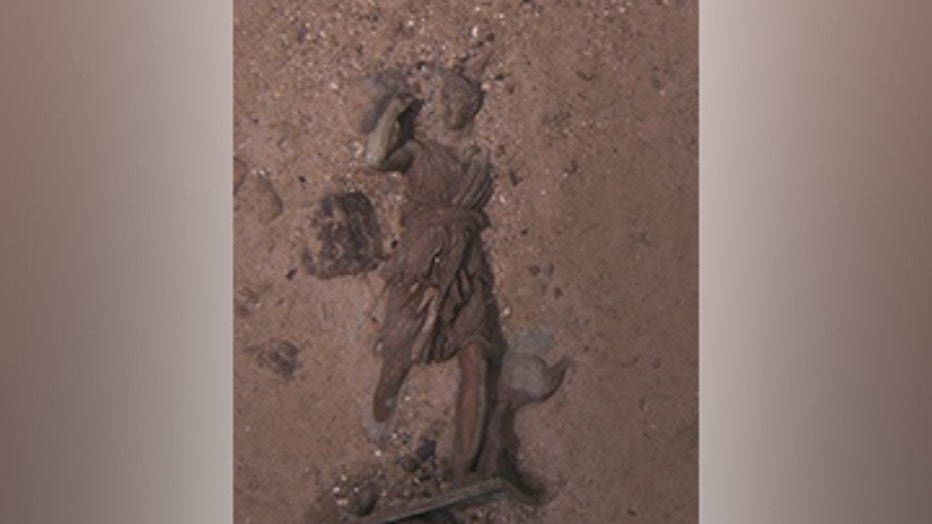RMS Titanic Inc., the company that holds the legal rights to the Titanic wreck site, completed its first journey since 2010 and released images from the expedition. (Photo courtesy of RMS Titanic, Inc.)
A company that owns the legal rights to salvage the Titanic wreck discovered a bronze statue and other items during its first expedition to the ship’s wreckage in years.
RMS Titanic Inc. completed its first trip since 2010 and released images from the expedition on Monday. The pictures show a site that continues to change over 100 years later.
RELATED: Anniversary of Titanic discovery: Everything to know about the dive site
The journey was highlighted by the rediscovery of the bronze statue “Diana of Versailles,” last seen in 1986, an artifact that most experts feared had been lost forever. The statue now has a clear, updated image, RMS Titanic, Inc. said in a statement from a company release.

The journey was highlighted by the rediscovery of the bronze statue “Diana of Versailles,” last seen in 1986, an artifact that most experts feared had been lost forever. (Photo courtesy of RMS Titanic, Inc.)
“The discovery of the statue of Diana was an exciting moment. But we are saddened by the loss of the iconic Bow railing and other evidence of decay which has only strengthened our commitment to preserving Titanic’s legacy,” Tomasina Ray, RMS Titanic, Inc. Director of Collections, said in a statement.
RMS Titanic said the crew spent 20 days at the site and returned to Providence, Rhode Island, on Aug. 9. The team also captured over 2 million high-resolution pictures of the site ever to exist.
RELATED: Titan submersible crew experienced ‘terror and mental anguish’ before death, lawsuit claims
According to an RMS Titanic release, the team is focusing on processing data so the findings can be shared with the scientific community.
There have been nine expeditions performed to the wreck site so far. RMS Titanic said in seven of those journeys, about 5,500 artifacts were found.
The Titanic struck an iceberg and sank in April 1912, killing all but about 700 of the roughly 2,200 passengers and crew, but the wreckage was not discovered until almost 75 years later, on Sept. 1, 1985.
In 2023, a Titan submersible imploded in the North Atlantic while transporting five people down to see the Titanic reviving interest in the well-known shipwreck. The implosion killed the submersible’s operator, Stockton Rush, and four others. Rush also co-founded OceanGate, the company that owned the submersible.
Relatives of a French explorer, Paul-Henri Nargeolet, who died in the implosion filed a wrongful death lawsuit against OceanGate, which suspended operations after the incident, the Associated Press reported.

